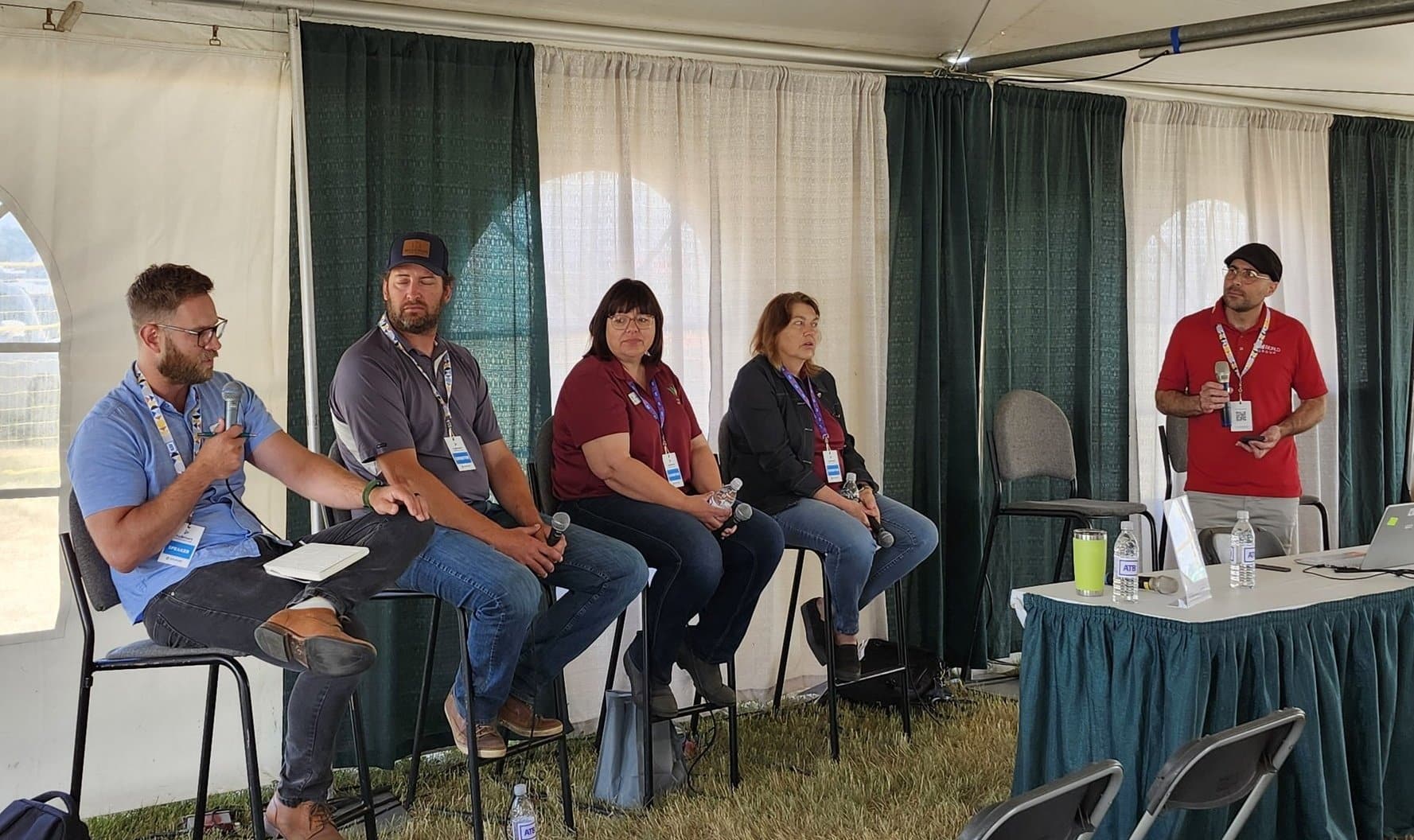In yesterday’s panel discussion at AgSmart hosted by the Alberta Seed Guide, industry leaders explored the transformative impact of modern technologies on the development of new seed varieties.
The panel, aptly themed “A Technological Time Machine: How New Technology Brings New Seed to Farmers Faster” featured Jeremy Boychyn, director of research at Alberta Grains; Russell Wildeman, a seasoned seed retailer and grower from Clive, Alta.; Lori Oatway, research scientist (quality) at Western Crop Innovations (WCI); and Jennifer Zantinge, biotechnology research scientist at WCI.
Breaking New Ground with Seed Varieties
Wildeman, drawing from his extensive experience in seed retail and cultivation, highlighted the significant advancements in barley varieties. “On the silage side, the barley developed (at WCI) in Lacombe was a game changer for lodging resistance and yield,” he noted. This innovation underscores the importance of continuous seed development.
Boychyn delved into the revolutionary impact of genomic selection. “Genomic selection allows us to identify specific DNA markers, accelerating the breeding process and enhancing traits like disease resistance and lodging reduction,” Boychyn explained. He also emphasized the potential of high-throughput phenotyping using drones and AI to analyze stress responses in different varieties, making the breeding process faster and more efficient.
The Lab Meets the Field
Oatway and Zantinge, key researchers at WCI, provided insights into the scientific advancements driving these innovations. Oatley discussed the transformative role of near-infrared spectroscopy in their research. “It allows us to predict quality traits in whole grain samples early in the breeding process, significantly speeding up our ability to make selections,” she said.
Zantinge elaborated on the integration of biotechnology in seed development. “We use genomic prediction to layer different methods, ensuring precision in selecting traits and combining them effectively,” she explained. This multilayered approach enhances the chances of developing superior varieties that outperform their predecessors.
Collaboration: The Key to Success
The discussion also highlighted the critical role of collaboration. Wildeman shared his experiences with field trials and how feedback loops with researchers drive continuous improvement. “It’s all about testing, analyzing, and refining. Collaboration ensures that we’re addressing real-world challenges effectively,” he noted.
Boychyn stressed the importance of partnerships in the breeding ecosystem. “Strong institutions like WCI are crucial for thorough field testing. It takes a comprehensive network to evaluate and enhance new varieties,” he said.
The Plutonium of Modern Agriculture
Drawing a parallel to the iconic Back to the Future time machine, moderator Marc Zienkiewicz likened data to the plutonium that fuels innovation. Boychyn added, “Without robust data and collaborative efforts, we can’t fully leverage these technologies. It’s about integrating diverse expertise to drive progress.”
Oatway highlighted WCI’s collaboration with Olds College Brewery as an example of leveraging local resources for innovative research. “Our micromalt plant allows us to evaluate new barley lines for brewing, providing critical sensory and quality data,” she said. This partnership exemplifies how targeted collaborations can enhance specific industry needs.
Boychyn wrapped up the discussion by addressing market acceptance. “Developing new varieties is just the beginning. Ensuring they meet market demands is crucial for their success,” he emphasized.













